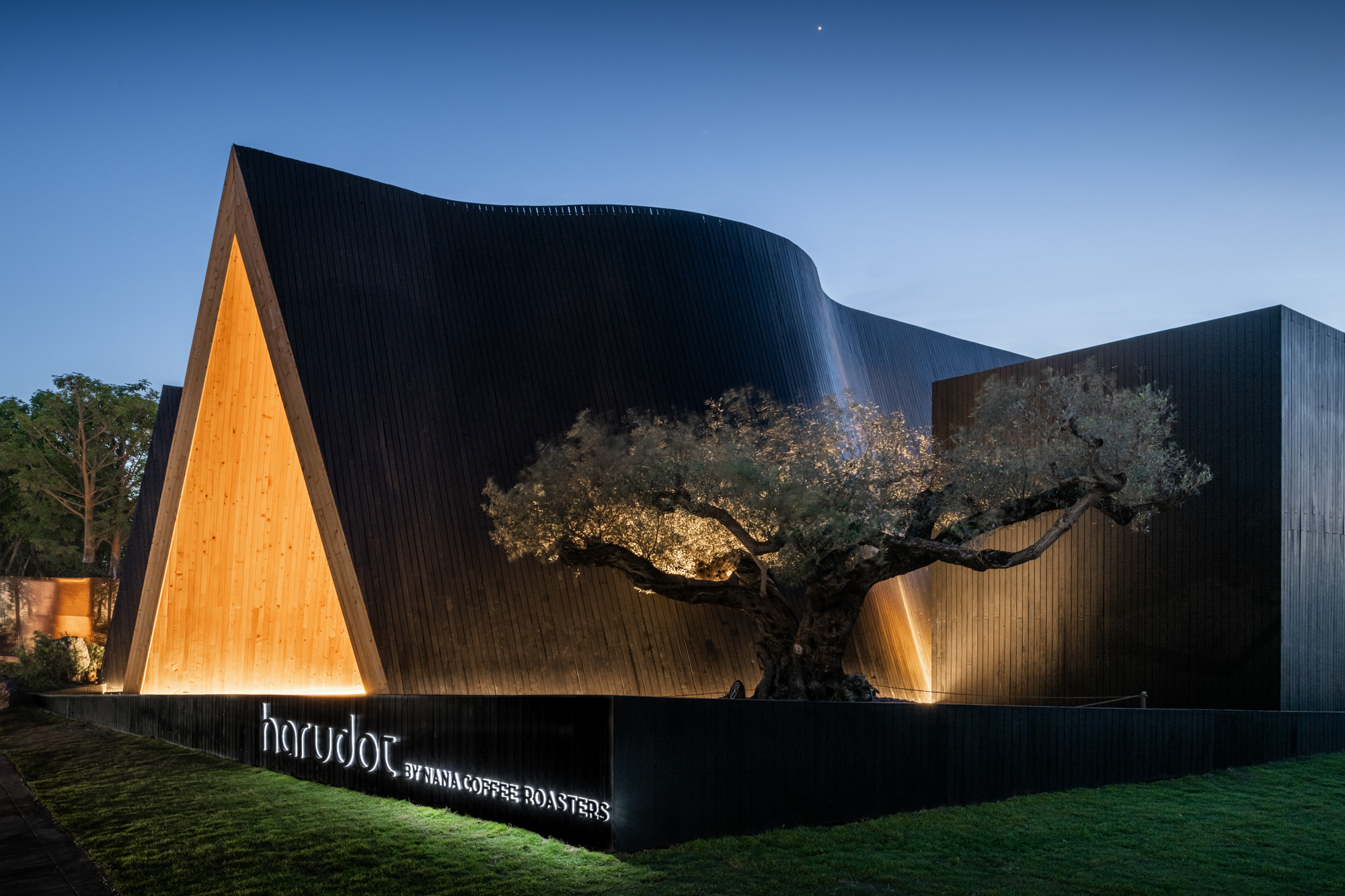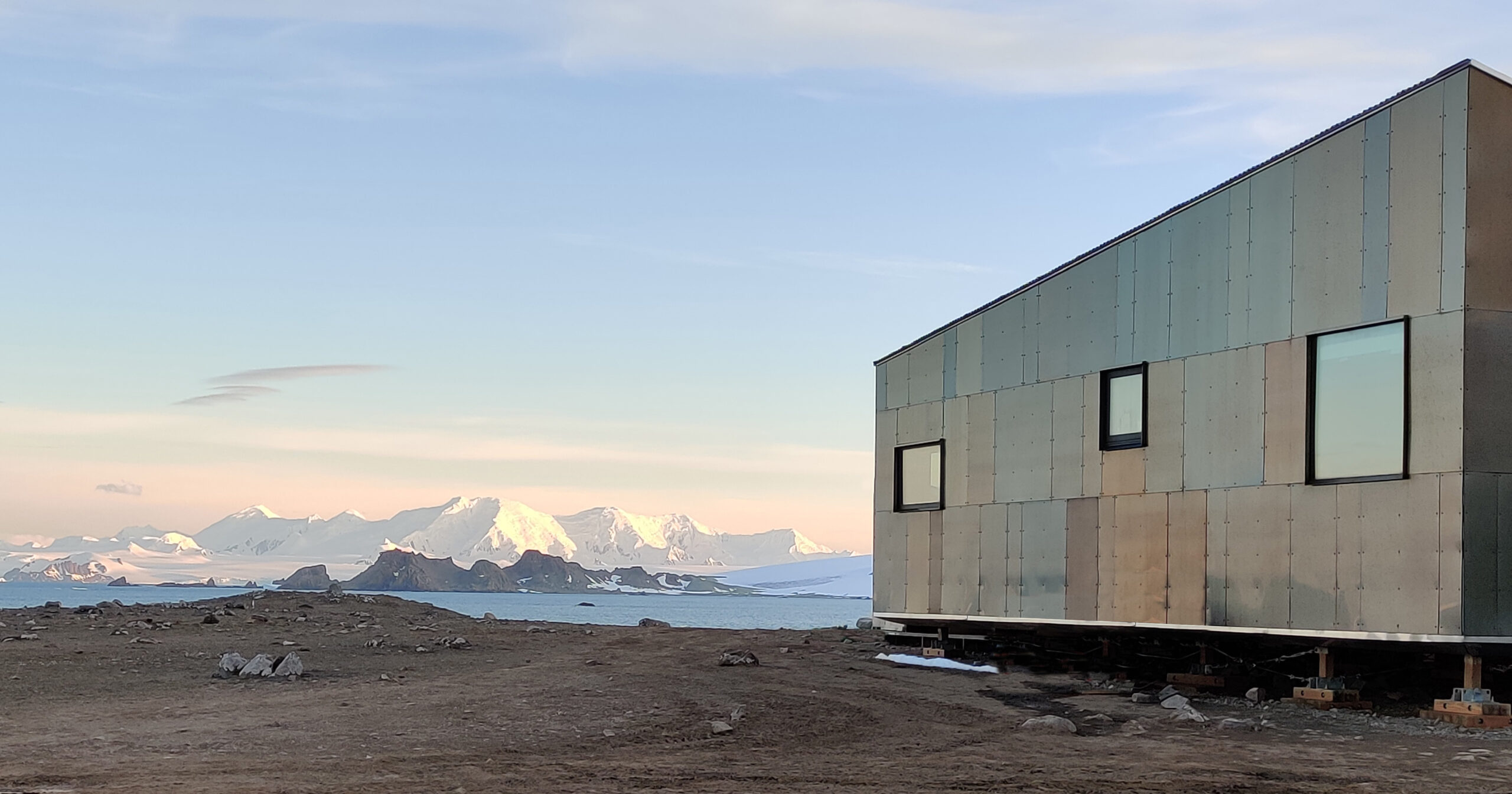Call for entries: The 14th Architizer A+Awards celebrates architecture's new era of craft. Apply for publication online and in print by submitting your projects before the Final Entry Deadline on January 30th!
Within an ancient camphor tree lives Totoro. With pointed ears and an unmistakable grin, the towering grey figure is the guardian spirit of the forest. Since the ’80s, Hayao Miyazaki’s “My Neighbor Totoro” has been somewhat of a cultural phenomenon, and the film’s supporting character, Totoro, a forest-dwelling entity, has become a truly iconic figure in Japanese culture and across the rest of the world. It may be the cuddly creature’s expressive face and gentle nature that make him so beloved, but it is Totoro’s deep connection with nature, captured so beautifully in the 1988 animation, that leaves viewers of the film contemplating their own relationship with nature.
“My Neighbor Totoro” invites its viewers into a stunning world where humanity and nature coexist in balance. The film stands out for focusing on creating an atmosphere of wonder and tranquility through its drawings and soundscapes as much as its storyline. The movie reminds us that magic and serenity can be found throughout the natural world and that we should cherish and care for it as Totoro does for his forest.
This sense of obligation to and love for nature has inspired the following A+Awards-winning architects to take a leaf straight out of Totoro’s book (or off his head) by embracing the natural surroundings of their projects and celebrating the beauty of the trees that dwell there. These five projects stand out as true champions of nature that would surely put a smile on the faces of Satsuki and Mei Kusakabe. Just as Totoro’s presence brings peace and joy, these brilliant projects create spaces that champion the beauty of living in harmony with nature, combining modern design with the ancient beauty of forests.
Harudot By Nana Coffee Roasters
By IDIN Architects, Tambon Samet, Thailand
Jury Winner and Popular Choice Winner, Restaurants (L >1000 sq ft), 12th Annual A+Awards
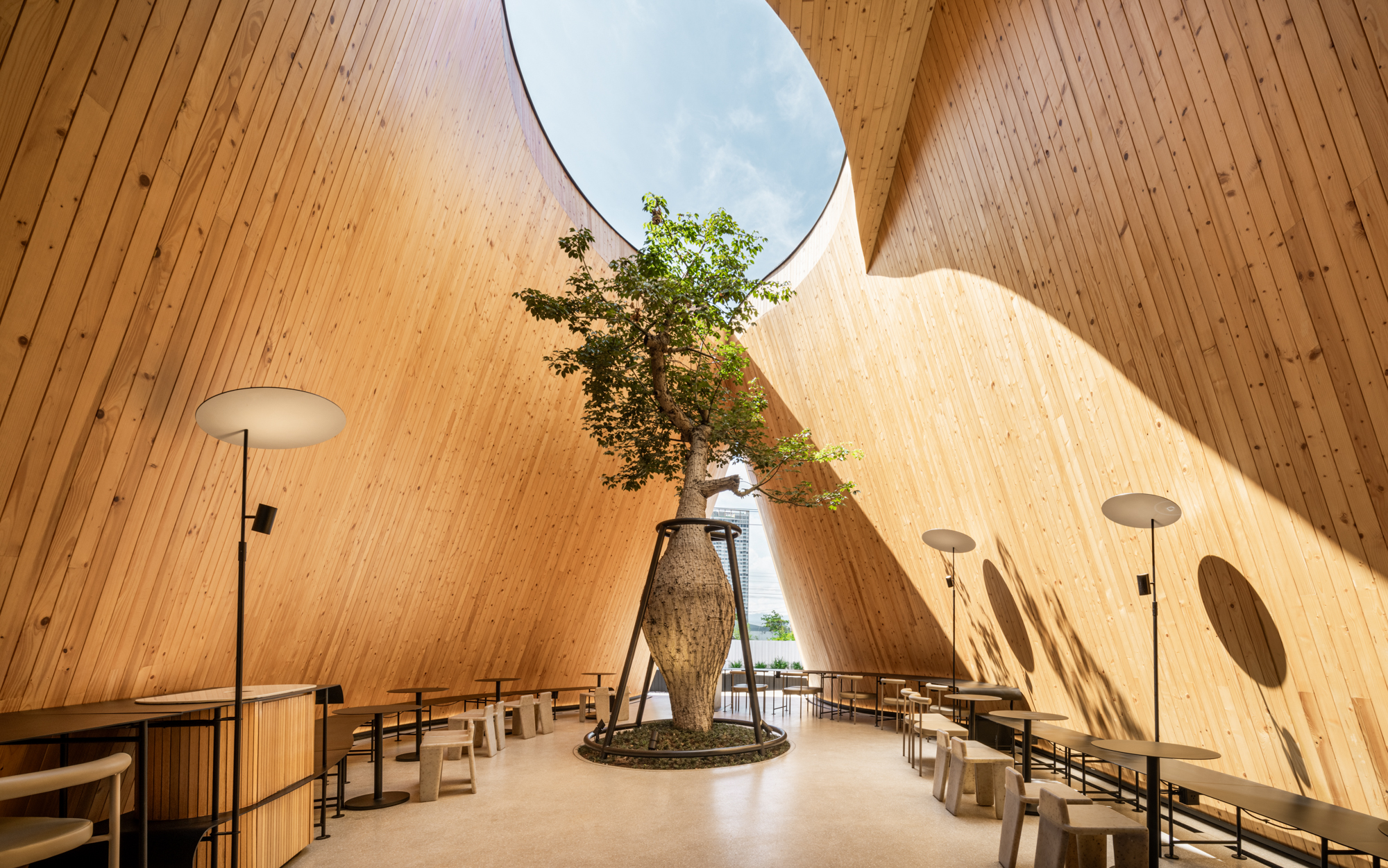
Photographs by DOF SkyGround
Harudot is a café located in the town of Chonburi, Thailand. The name “Haru” translates to “Spring” in Japanese, referring to “new beginning” and “growth,” while “Dot” symbolizes a “starting point.” From the exterior, the building, clad in black timber, is striking and dominating, sharply extruding from its surroundings. It is distinctly modern yet has an air of traditionalism. Inside, the space is calming, bright and surprisingly huge. Its vastness seems to cocoon visitors under its pine gables with their warm hues. Sweeping curved openings bring a sense of movement to the relatively sharp-looking building, and it makes the space feel like it could be a living thing in itself.
Trees are integral to the design, and many varieties feature prominently inside and out. However, the central focus is a large bottle tree (baobab) that sits pride of place. The gigantic tree is placed in an inner courtyard, where the architects have opened the gable roofs in a way that makes it appear as though the impressive tree is pushing its way out through the building’s apex. This clever design gives a sense that the tree was planted long ago and is breaking out of the roof while also giving the beautiful tree the space and light it needs to flourish.
Mawhitipana House
By MacKayCurtis, Auckland, New Zealand
Jury Winner, Private House (S 1000 – 2000 sq ft), 12th Annual A+Awards
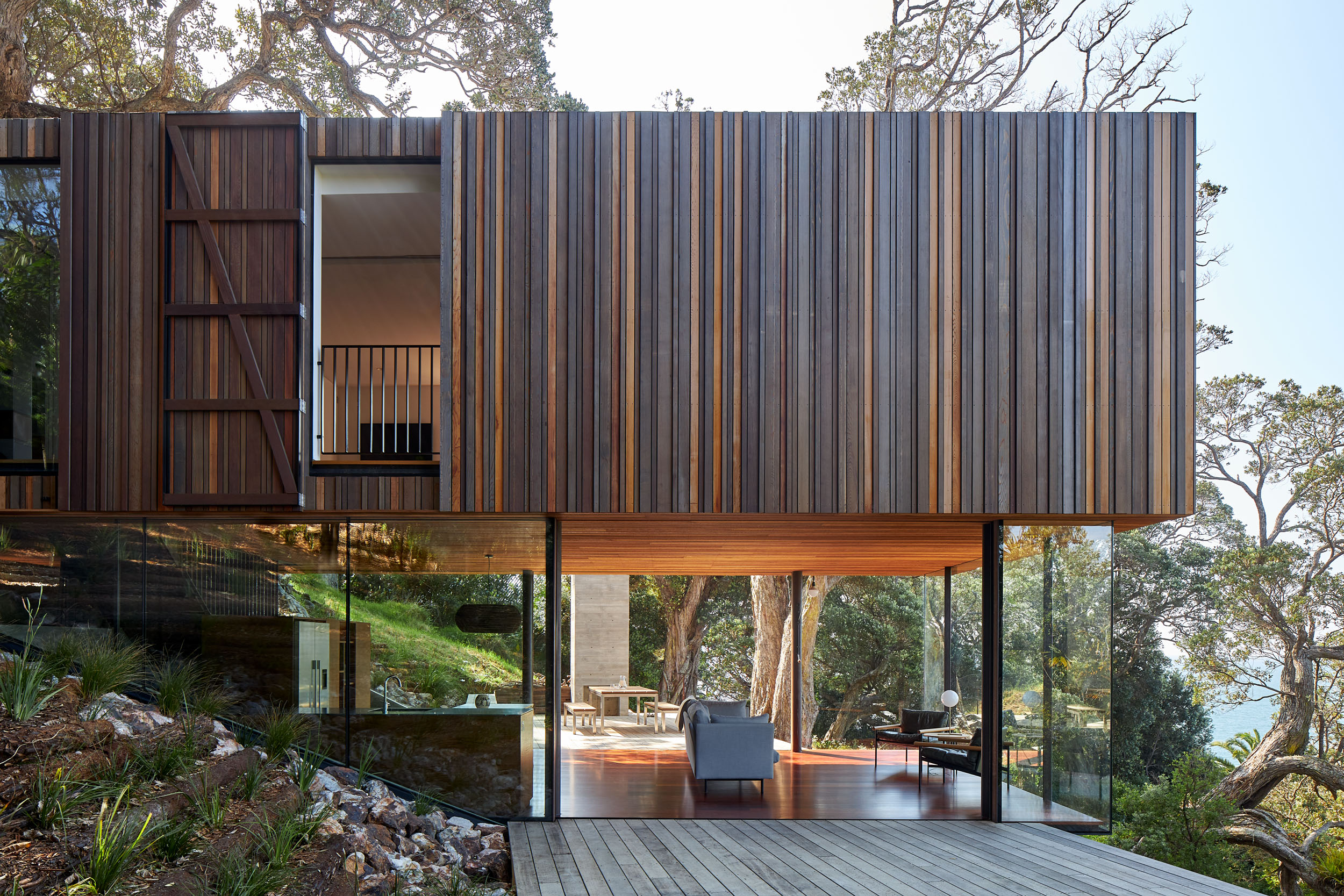
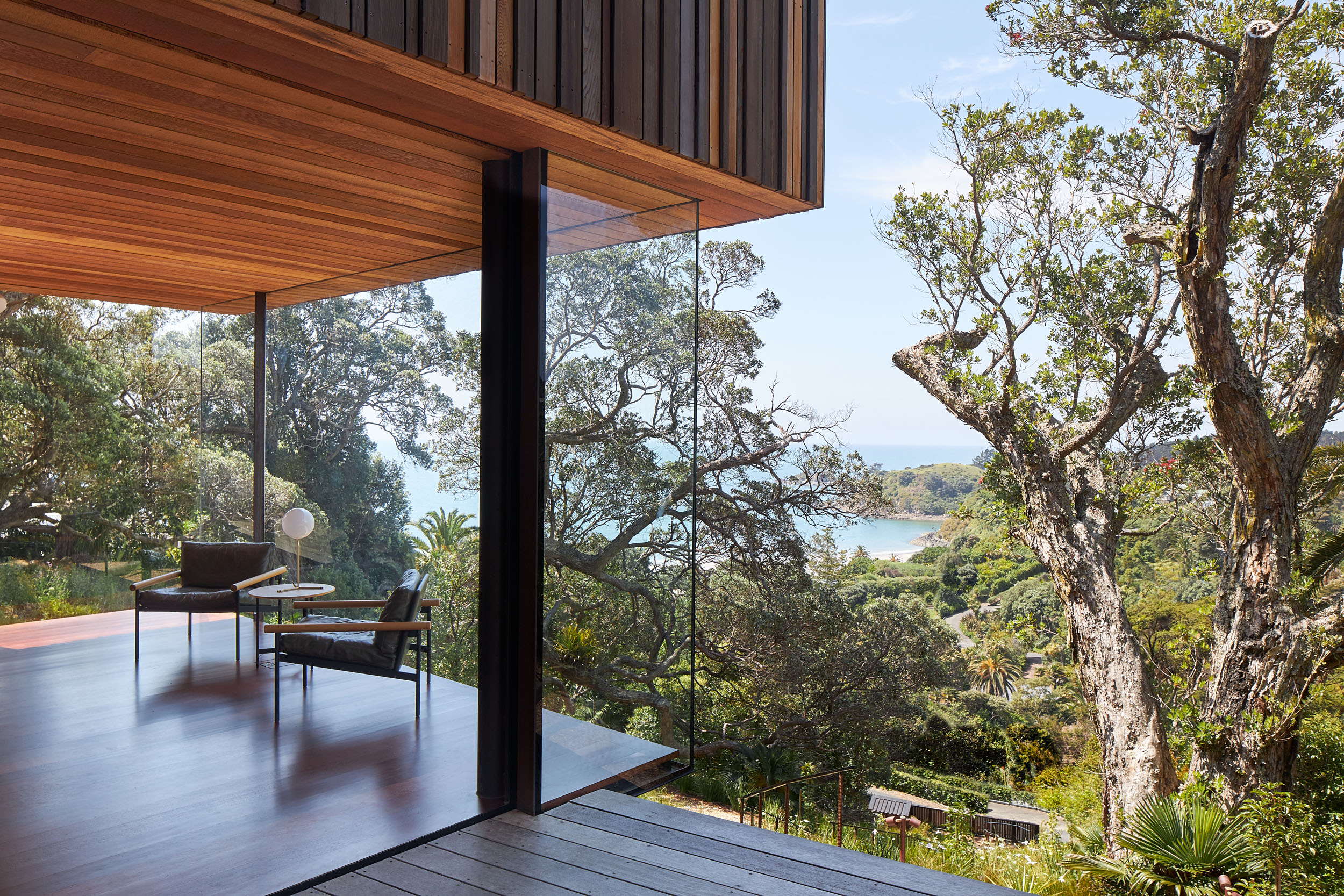
Photographs by Simon Wilson
Mawhitipana House is the perfect example of a home that integrates with its natural surroundings. The owners of this stunning property wanted to make the most of the views over Mawhitipana Bay below while flooding their homes with as much sunlight as possible. Additionally, they wanted large outdoor living areas that they could use to relax outside as much as possible, and it does so perfectly.
The home has a relatively small footprint (compared to the land it is on) and tucks comfortably back into its steep site. It juts out on top of glazed walls that look to hold the timber box sleeping structure in mid-air, while the timber cladding, in its varied thicknesses and shades, reflects the rhythm of the surrounding forestry. The area around the property is covered in mature protected Pōhutukawa trees, which form a large dominant green canopy, keeping the area comfortably ambient. Mawhitipana House feels like it belongs in this location, not dominating the landscape but becoming part of it.
River Bend Residence
By Lake|Flato Architects, New Braunfels, Texas
Jury Winner, Private House (M 2000 – 4000 sq ft), 12th Annual A+Awards

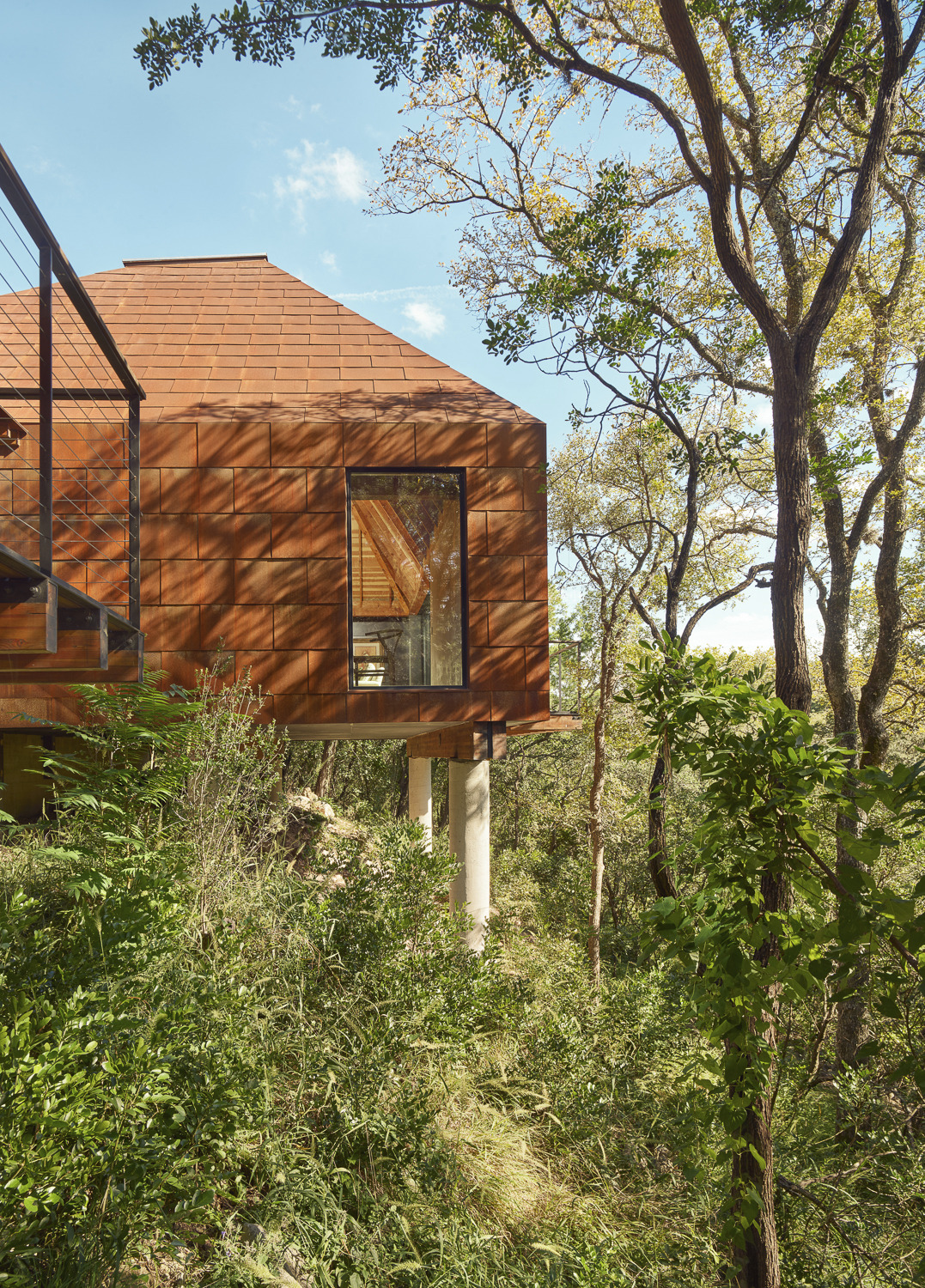
Photographs by Casey Dunn
Like Mawhitipana House, River Bend Residence is envisioned as a home that embraces the outdoors and respects its natural surroundings. It is comprised of four structures, each with its own function: living, sleeping, art studio and carport. Surprisingly for a development this large, only six trees were removed to build the property.
Each building was carefully positioned to minimize the number of trees that needed to be taken away during construction. The two primary structures are located on a relatively steep slope and are supported by piers, with only the back third of the buildings sitting on the ground. This allowed for minimal excavation, reducing the impact on the site and its existing wildlife.
Simple in form and finish, the home, intended to be a retreat for a retired couple, focuses on maximizing light and minimizing maintenance. A gorgeously striped back intervention that does just enough and no more to become an unfussy and elegant home wrapped in nature.
Upper House
By KOICHI TAKADA ARCHITECTS, South Brisbane, Australia
Jury Winner, Multi-Unit Housing, High Rise (16+ Floors), 12th Annual A+Awards
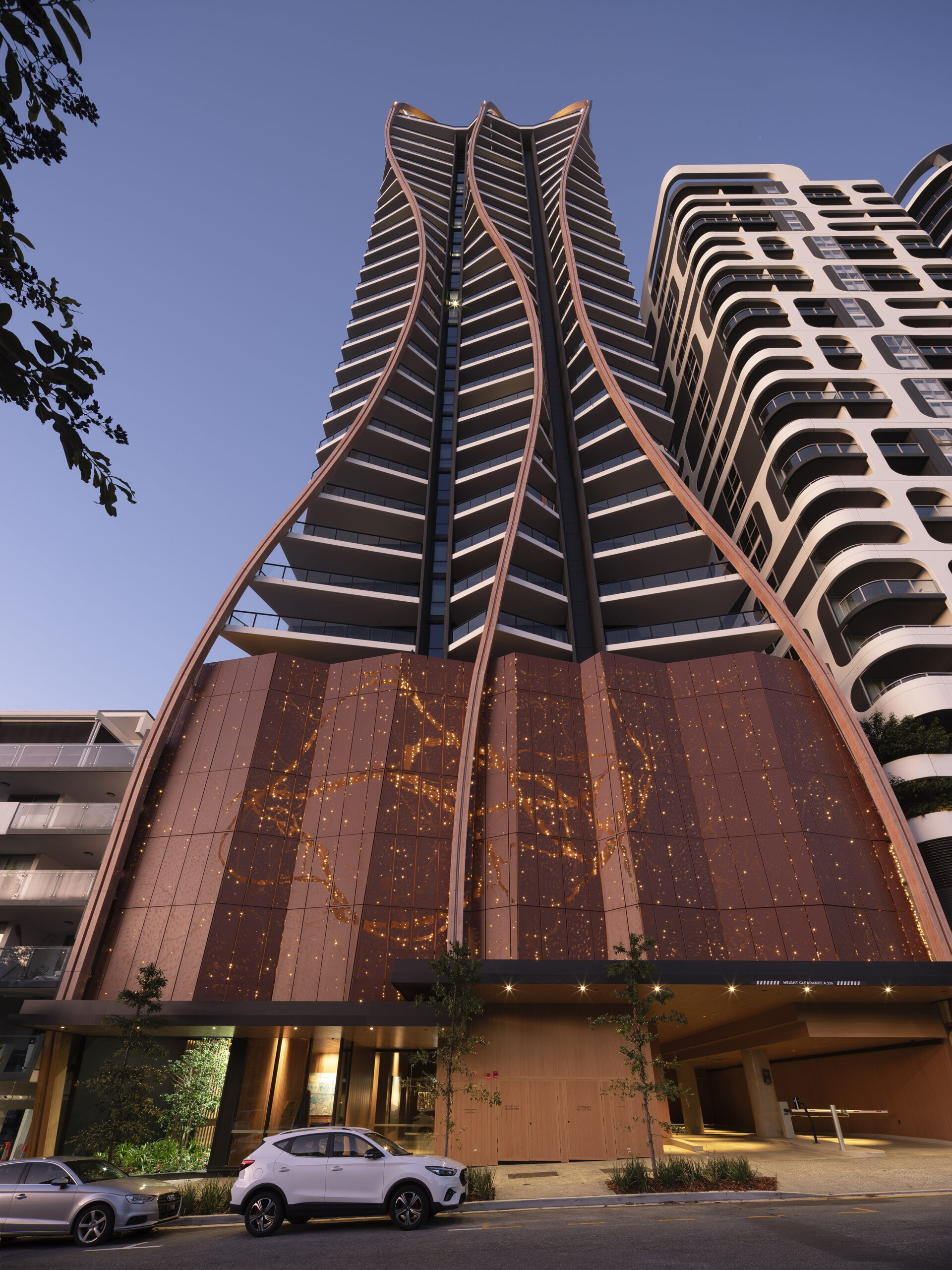
Photograph by Tom Ferguson

Photograph by Scott Burrows
Sustainability is at the core of Upper House, a multi-residential project by Koichi Takada Architects. The building achieves a 5-Star Green Star rating and employs both passive and active Environmental Sustainable Design strategies, with features like a 40kL rainwater tank for irrigation, extensive landscaping to reduce heat-island effect and a 20% reduction in water consumption.
The bold architecture celebrates Brisbane’s natural beauty and draws inspiration from the native Moreton Bay Fig tree, replicating its organic structure with architectural ribbons that meander down the unique façade. The building, with its impressive form, is topped with a natural timber pergola and tropical rooftop oasis and claims to be setting a new standard in multi-residential design, where connection to nature, quality of design, resident wellbeing and environmental sustainability each align.
Throughout, FSC-certified Siberian larch glulam timber was sustainably sourced and chosen for its durability and longevity in Australian weather conditions. The timber purlins are designed beautifully to shade the rooftop facilities and protect users against the harsh summer sun in a dramatic way.
Totoro House
By ROSSETTI+WYSS ARCHITEKTEN, Gunzwil, Beromünster, Switzerland
Jury Winner, Multi-Unit Housing, Low Rise (1 – 4 Floors), 12th Annual A+Awards
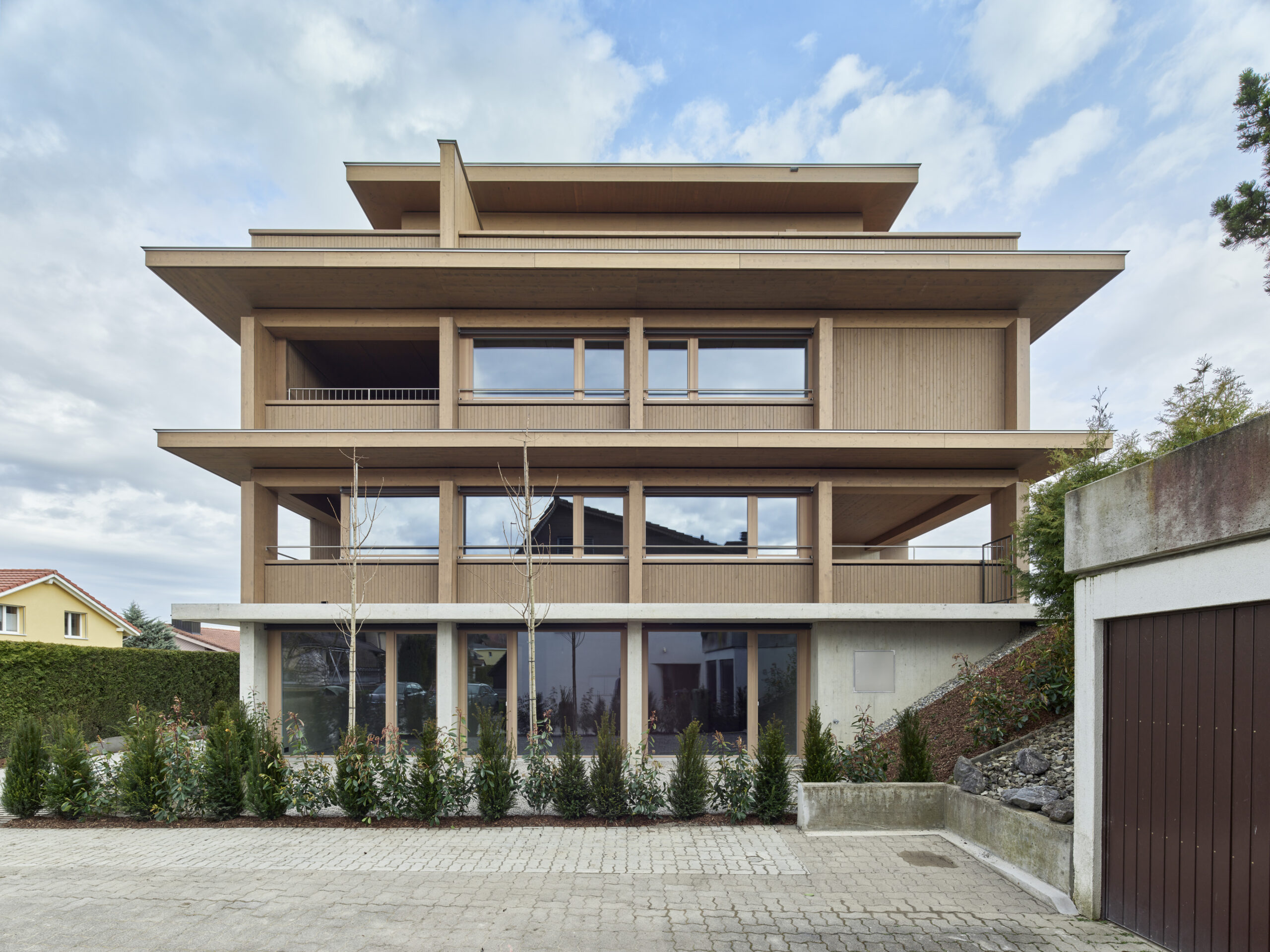

Photographs by Juerg Zimmermann
Finally, a direct ode to the big, fluffy grey guy, Totoro House. The building by ROSSETTI+WYSS ARCHITEKTEN takes its inspiration from the rawness and attitude of the natural forest. Restrained in its use of materials, the architects have chosen raw, uncoated and imperfect finishes that will patina over time to give the building a sense of being a living structure.
The building is regarded as an unusual design for the area of Gunzwil in Switzerland, and so it stands out as unique and daring in form and finish. However, the architects have, in their wisdom, retained some of the traditional elements that are typical of the surrounding architecture. Timber canopies wrap around the structure, extending the interior outwards to create private outdoor spaces that also help to reduce the impact of the strong wind and weather that is common to the location.
Totoro House is a stunning example of a building that isn’t afraid to embody the simplistic foundations of nature and truly reflects the calming existence of its namesake.
Call for entries: The 14th Architizer A+Awards celebrates architecture's new era of craft. Apply for publication online and in print by submitting your projects before the Final Entry Deadline on January 30th!
